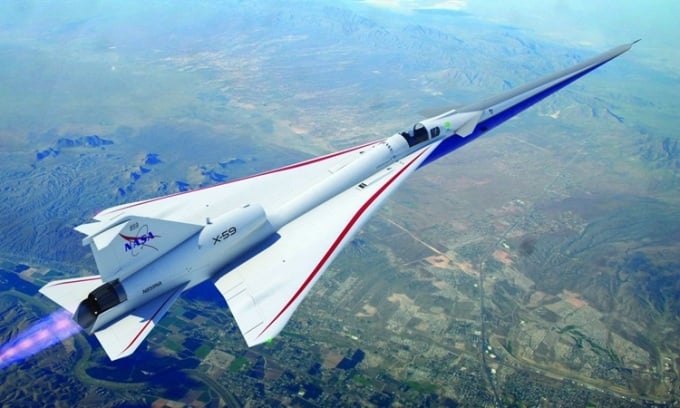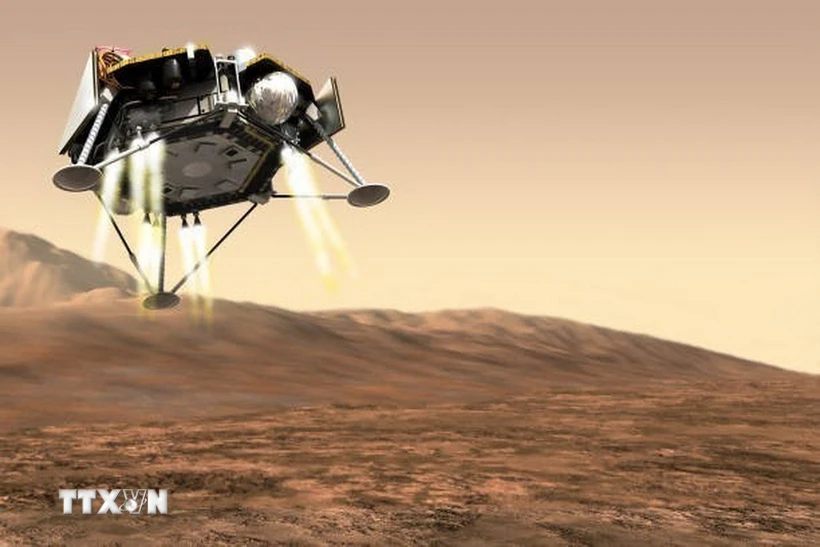The year 2023 marks many steps forward for NASA in developing the aviation industry, especially in developing quiet supersonic passenger aircraft.
Quest

The X-59 aircraft is expected to pave the way for silent supersonic flight over land. Photo: NASA
At the forefront of NASA’s aeronautics projects is the Quest mission, which aims to usher in the era of commercial supersonic flight over land. The ambitious mission centers around NASA’s X-59 research aircraft, a pioneering hypersonic aircraft meticulously designed to reduce the noise of sonic booms to a soft slam of a door. The X-59 will fly over several U.S. communities, collecting data on how residents react to the audible noise. That data will help develop new regulations that will make supersonic flight over land a reality.
Another major milestone in the Quest mission was the completion of X-59 assembly at Lockheed Martin’s Skunk Works facility in California. The technologically advanced aircraft underwent rigorous testing and received its final coat of paint. Its first flight is scheduled for 2024.
Project X-66
The X-66, a joint NASA-Boeing project, is scheduled to take to the skies in 2023. The full-scale test aircraft aims to test revolutionary fuel-efficient designs and green technologies that will reduce emissions from future narrow-body passenger aircraft. The project will play a key role in supporting the US goal of zero greenhouse gas emissions from aircraft by 2050.
AAM Mission
Another prominent NASA aviation initiative is the Advanced Air Mobility (AAM) mission, which aims to redefine public transportation by integrating passenger, cargo, and public services at low altitudes. This project lays the groundwork for the growing electric air taxi and drone industries, and NASA is actively contributing data to support the Federal Aviation Administration’s efforts to bring these vehicles into the national airspace.
Rescue Drone
In addition to aircraft, NASA is also increasing its contribution to emergency response through the Advanced Capabilities for Emergency Response Operations (ACERO) project. ACERO helps improve wildfire management by leveraging advanced drone and aviation communications technology. NASA works with a variety of organizations and entities, including government agencies, the scientific community, and commercial companies, to safely use drones to fight wildfires.
An Khang (According to Tech Times )
Source link



![[Photo] Overcoming all difficulties, speeding up construction progress of Hoa Binh Hydropower Plant Expansion Project](https://vstatic.vietnam.vn/vietnam/resource/IMAGE/2025/4/12/bff04b551e98484c84d74c8faa3526e0)
![[Photo] Closing of the 11th Conference of the 13th Central Committee of the Communist Party of Vietnam](https://vstatic.vietnam.vn/vietnam/resource/IMAGE/2025/4/12/114b57fe6e9b4814a5ddfacf6dfe5b7f)































































































Comment (0)